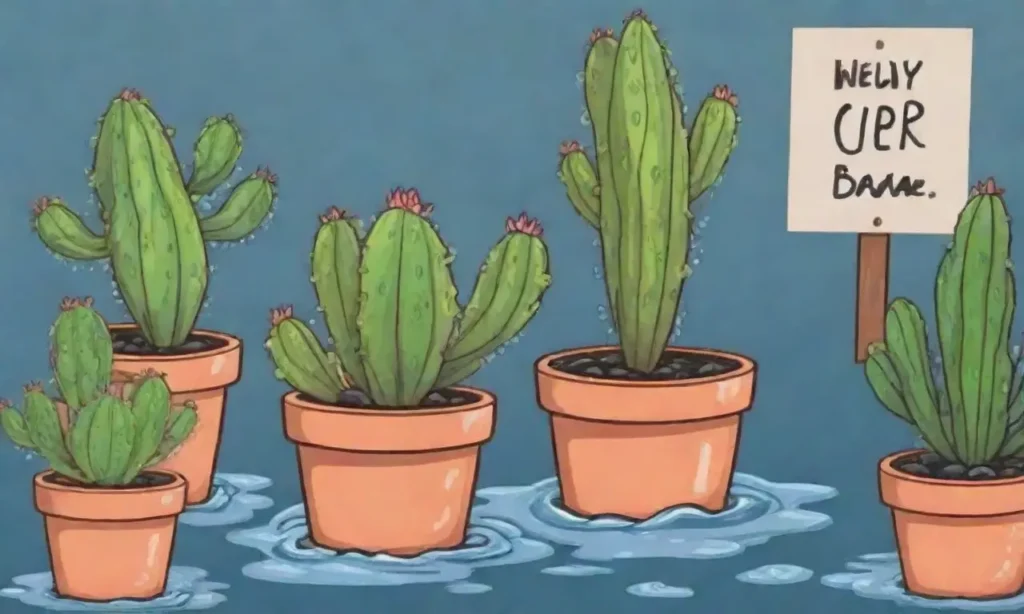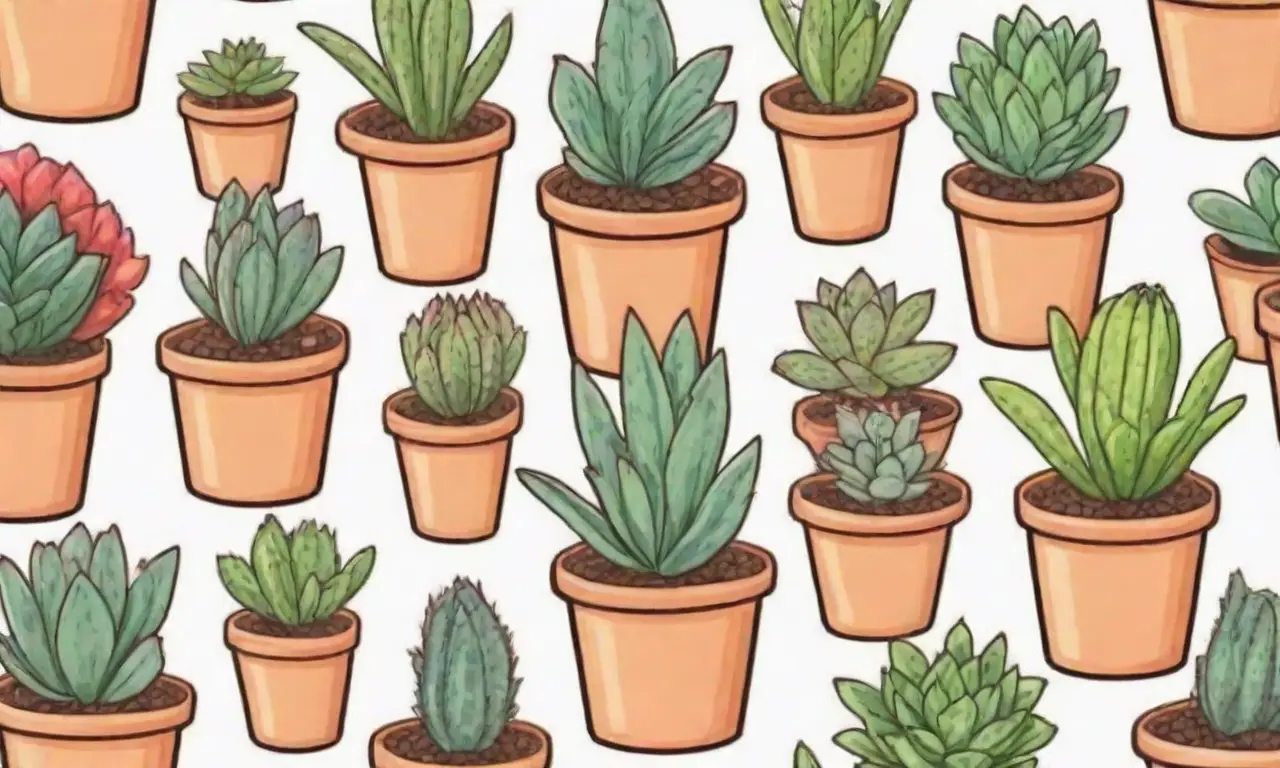Dealing with Overwatering: The Silent Killer of Your Succulent Plants

Introduction
Succulent plants, known for their unique water-storing capabilities and striking appearances, have become a favorite among plant enthusiasts and beginners alike. Their aesthetic value, combined with relatively low maintenance requirements, makes these robust plants appealing to many. However, despite their resilience, succulents are not immune to one of the most common mistakes in plant care: overwatering. Overwatering can often be a silent killer, leading to root rot, leaf drop, and eventually the demise of these lovely plants. Understanding the implications of overwatering and learning how to prevent it can go a long way in ensuring the health and longevity of your succulent collection.
This article aims to explore the concept of overwatering in succulents in depth. We will discuss the signs and symptoms of overwatering, preventive measures to avoid this mistake, and recovery strategies if you find your succulents in distress. By the end, you will have a clear understanding of how to keep your succulents thriving—with just the right amount of water.
Understanding Succulents and Their Water Needs
Succulents are specialized plants that have adapted to arid environments where water is scarce. Their thick, fleshy leaves and stems are designed to store moisture, enabling them to survive drought conditions. However, this unique adaptation also makes them highly susceptible to problems arising from excessive moisture. To cultivate healthy succulents, it is essential to understand their specific water needs, which vary based on several factors such as the season, type of succulent, and environmental conditions.
During the growing season, typically spring and summer, succulents require more frequent watering, as they actively absorb nutrients to support growth. However, even during this period, it is crucial to allow the soil to dry out completely between watering sessions. A common guideline is to water succulents every 1-3 weeks, depending on the climate and plant type. In contrast, during the dormant season of fall and winter, these plants require significantly less water, often only needing a drink every month or so. Understanding these seasonal fluctuations in water needs will help you avoid the perilous trap of overwatering.
Another critical factor to consider is the type of soil in which your succulents are planted. A well-draining soil mix, often comprising sand, perlite, and organic material, is essential for maintaining the right moisture balance. Regular potting soil can retain too much moisture, leading to waterlogged conditions—an ideal scenario for rot to set in. For optimum health, ensure that your succulents are housed in containers equipped with drainage holes, allowing excess water to escape and preventing the risk of overwetting.
Identifying the Signs of Overwatering
Recognizing the early signs of overwatering is critical for the health of your succulents. Often, damage caused by too much moisture can be mistaken for other health issues, making it challenging to ascertain the root cause. A particularly noticeable symptom is leaf yellowing; if the leaves are turning yellow or becoming mushy to the touch, this is a clear indicator that your plant is receiving more water than it can handle. Additionally, you might observe leaves that are easily detached from the stem, signaling a weakened plant structure as a result of saturated soil.
Another sign that your succulent is suffering from overwatering is the development of root rot. This condition occurs when the roots begin to decay due to excessive moisture, leading to a foul smell emanating from the soil. If you suspect root rot, gently remove the plant from its pot and inspect the roots. Healthy roots should be firm and white, whereas affected roots will appear brown and mushy. If you find this to be the case, it is essential to act promptly to save your plant.
Lastly, overwatering can also manifest as fungal infections. These appear as black or gray spots on the leaves and can quickly spread if not appropriately addressed. Additionally, mold may form on the soil's surface, indicating that the environment is too damp for your succulent's health. Acting quickly upon noticing any of these signs will increase the likelihood of success in recovering your plant, making it imperative to stay vigilant in your observations.
Preventive Measures Against Overwatering

Prevention is always better than cure, especially when it comes to the health of your succulents. One of the most effective preventive measures is to establish a proper watering routine. As previously mentioned, understanding the seasonal water needs and adapting your watering schedule accordingly is key to preventing overwatering. Always check the soil moisture level before watering; you can do this by inserting your finger into the soil about an inch deep. If the soil still feels damp, delay watering until it has dried out.
Another practical tip for preventing overwatering is to understand the environmental conditions surrounding your plants. Factors affecting watering frequency include temperature, humidity, and whether the plant is indoors or outdoors. In warmer, dryer climates, plants may require more regular watering, while higher humidity levels can slow down evaporation and necessitate fewer watering sessions. By being attuned to these changes, you can adjust your watering habits to better suit your succulent's needs.
Oversized pots can also contribute to overwatering. Many people opt for larger pots out of a desire to give their plants more room to grow, but this can lead to an excess of soil that retains moisture longer than what's necessary. Choose pots that are the right size for your specific types of succulents, allowing adequate space for root development without compromising the plants' health due to over-enrichment of soil.
Recovery Strategies for Overwatered Succulents
If you suspect that you've overwatered your succulents, immediate action is required. The first step is to remove them from their pots and examine the root system. As mentioned earlier, healthy roots should appear firm and white, while rotting roots will be brown and mushy. Trim away any affected roots using sterilized scissors to prevent the spread of disease. It's crucial to allow the remaining healthy roots to dry out for at least a day before replanting.
Once the roots are prepared, choose a new, dry potting mix specifically designed for succulents or cacti. These soil mixes typically contain a higher proportion of sand, perlite, or gravel, leading to better drainage characteristics compared to standard potting soil. Replant your succulent in this new mix and remember to use a pot with drainage holes to allow for excess moisture to escape in the future.
In addition to repotting, it may also be beneficial to reduce the frequency of watering for the next few weeks. Allow the soil to dry out completely before considering another soak. This approach will enable the plant to stabilize and focus on recovery instead of additional stress from moisture imbalance. You can also refrain from fertilizing until your succulent shows signs of new growth, as stressed plants can be more sensitive to nutrient spikes.
Conclusion
In summary, overwatering is one of the most common and dangerous mistakes that succulent enthusiasts face. Understanding why these plants are vulnerable to excess moisture, recognizing the signs of distress, adopting preventive measures, and implementing effective recovery strategies are essential to ensure the health of your precious plants. With proper care and attention, your succulents can thrive beautifully, showcasing their unique colors and forms joyfully in your home or garden.
When we treat our plants with the respect they deserve, by being attuned to their specific needs, we foster an environment where they can flourish. Those vibrant, lush succulents not only enrich our spaces aesthetically but also strengthen our relationship with nature. Therefore, arm yourself with knowledge and have confidence in your ability to provide a thriving home for your succulents! Your plant care journey can be rewarding and fulfilling, offering a beautiful display of life that brings joy and inspiration into your surroundings.
If you want to read more articles similar to Dealing with Overwatering: The Silent Killer of Your Succulent Plants, you can visit the Growth Challenges category.
